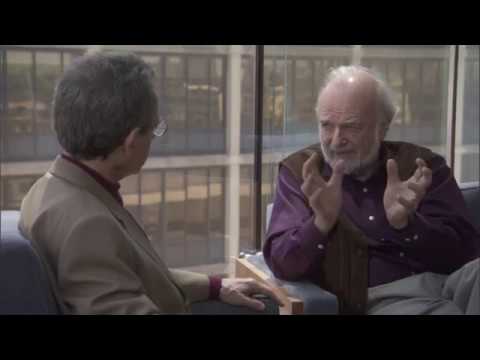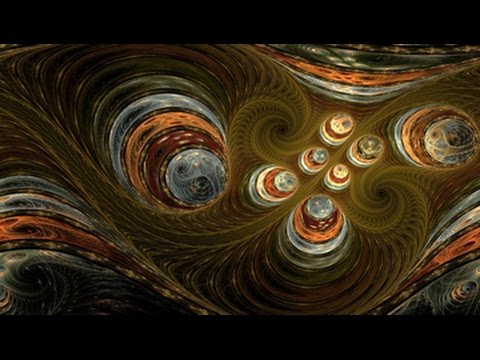The Royal Institution
Our experience of colour is a based on the physics of light, but Andrew Hanson uses demos and optical illusions to show that there is a lot more to colour than meets the eye.
Subscribe for regular science videos: http://bit.ly/RiSubscRibe
Colour informs, influences consumer choices, warns us and comforts us. But how do we ascribe numbers to a human perception which is incredibly versatile and variable? Andrew Hanson will elaborate on his own work in the field of colour measurement.
For 25 years Andrew Hanson has been professionally measuring colour, from evaluating the appearance of ornamental plants, to building the world’s first national standards telespectroradiometer to calibrate the colour of visual display units and a machine to measure the shininess of cats. He is currently Outreach Manager and Occasional Senior Scientist at the National Physical Laboratory, the UK’s National Measurement Institute and is past Chairman of the Colour Group of Great Britain.
This talk was filmed in the Ri on 19 March 2018.
—
Thank you for our Patreon supporters who help us make more videos like this:
Ashok Bommisetti, Greg Nagel, Lester Su, Rebecca Pan and Will Knott.
—
The Ri is on Patreon: https://www.patreon.com/TheRoyalInsti…
and Twitter: http://twitter.com/ri_science
and Facebook: http://www.facebook.com/royalinstitution
and Tumblr: http://ri-science.tumblr.com/
Our editorial policy: http://www.rigb.org/home/editorial-po…
Subscribe for the latest science videos: http://bit.ly/RiNewsletter
Source




I always saw it as 'color'
Well, that was a colorful presentation.
Whan an eye opener 😀
Andrew that was a really well done lecture! Great job & thanks. i hope you make another follow up soon! ok if i add spanish subtitles?
Lame
Who chose that camera angle at 27 minutes I wanted to participate
That outfit. Does he know he's not Indian?
At 19:45 he calls the green bars "blue", which I know is correct for some people, it just amused me coming from someone like Dr Hanson himself
Lovely presentation, a bit basic, i'd love to see a deep dive into the subject. I'm specially interested in the perception of color itself, it's a completely psychological concept. Color does not exist in nature, only light of different wavelengths and energy levels. What we perceive as color, where does that come from. I don't think we have an answer to that. I understand the evolution of different receptors for various wavelengts of light can add a great survival advantage, but why do we perceive the colors the way we do. Is my red the same as yours? We all learn that the red button is red, but do we generally perceive the same? Can we even measure that? Endless topic.
That yellow object looked green under blue light.
"Beyond the 2 degrees there is not that much sensitivity" although Psych 101 courses have students showing there is certainly enough sensitivity to determine between colours in peripheral vision at 30-50 degrees.
Color*
@ the very end, the 4 colors are NOT identical.
The orange and grape illusion is amazing!
if you have a white led made from blue and yellow phosphorus phosphate does that light split into blue and yellow or all rainbow colour ? ? ??♂️
Actually, he only talked about a small part of this mind-sensor mess. What your eyes see can change what your ears hear! This is how ventriloquists do their thing. You see their own mouths very still, but the puppet's mouth moving a lot, so your brain automatically moves the center of your hearing system to the puppet. This can even change the sounds that you think you hear, since a human mouth makes certain sounds when moving certain ways, so your brain will sometimes overlay the actual sounds with those sounds that it thinks that the mouth moving like that HAS TO have generated; that is, you get two different sounds when you open or close your eyes when staring at a talking face with the audio portion of the image different from the video portion of the image — AND YOU CAN'T FIX THIS!! This can create some very scary effects that make you think you have gone crazy.
19:20 IMPERIAL DEMON I WILL NOT FALL FOR YOUR TRICKERY
people often ask me "then how do you see traffic lights" and I answer, half jokingly "red is at the top" – maybe there's more to that than I first thought…
"if it can't be measured it can't be made" don't know who said this.
Reading Goethe and Werner while complementing Berger's Ways of Seeing with this wonderful lecture, the timing couldn't have been more colourful
great vid cant wait for more content :))))))
wow, im impressed
…and then there's 'sterling' consisting of finely alternated stripes like shimmering silver…
Do you suppose we do the same perceptive "morphing" of ideas? Of political thought?
Londo Mollari approved outfit. Missing the traditional crest though…
loved this one
interesting!
You need to stop using these close mics, it sounds like he's chewing gum in our ear. Use lapel mics.
Nice outfit
I was playing with colour to indicate ranges of physical measurements like speed, height, etc for my web app when I became fascinated by the 3D nature of light.
This led me to a bit of deeper investigation which gave rise to this little paper on the subject which you may enjoy. http://gpsanimator.com/gif1/colorCube.html
I was a little disappointed that Dr. Hansen was a bit off in describing the causes of the "reversed after image", where, for example a blue image reverses to a yellow after image.
Why is yellow opposite to blue, and green opposite to red?
Nothing to do with the receptor cells becoming tired, but more to do with how the ganglions convert RGB/intensity to Red/Green and Blue/Yellow along the optic nerve.
Regarding the dress. Most people saw the same image. I saw two distinctively different images. I assume it's the brain who sorta blurs the colors out so they appear to be the same image.
brilliant!
No way those eyes at the end are identical.
He needs more people to study, Both of my eyes have very good peripheral vision in full colour. I can recognise random shapes and colour without looking directly at the object.
Fantastic talk; fantastic speaker. Does anyone know if there was a Q&A for this session? I couldn't locate it on youtube 🙁
sophomoric
Thank you ………..)
Never mind how we see color, I'm still trying to figure out how you spell it LOL
That fabulous shirt and jacket is from "India"!
Photoshopped.
Color or Colour?
Very fascinating discussion. Thank you so much for your insight.
That was an amazing presentation, very well done – good job!
Fabulous talk!